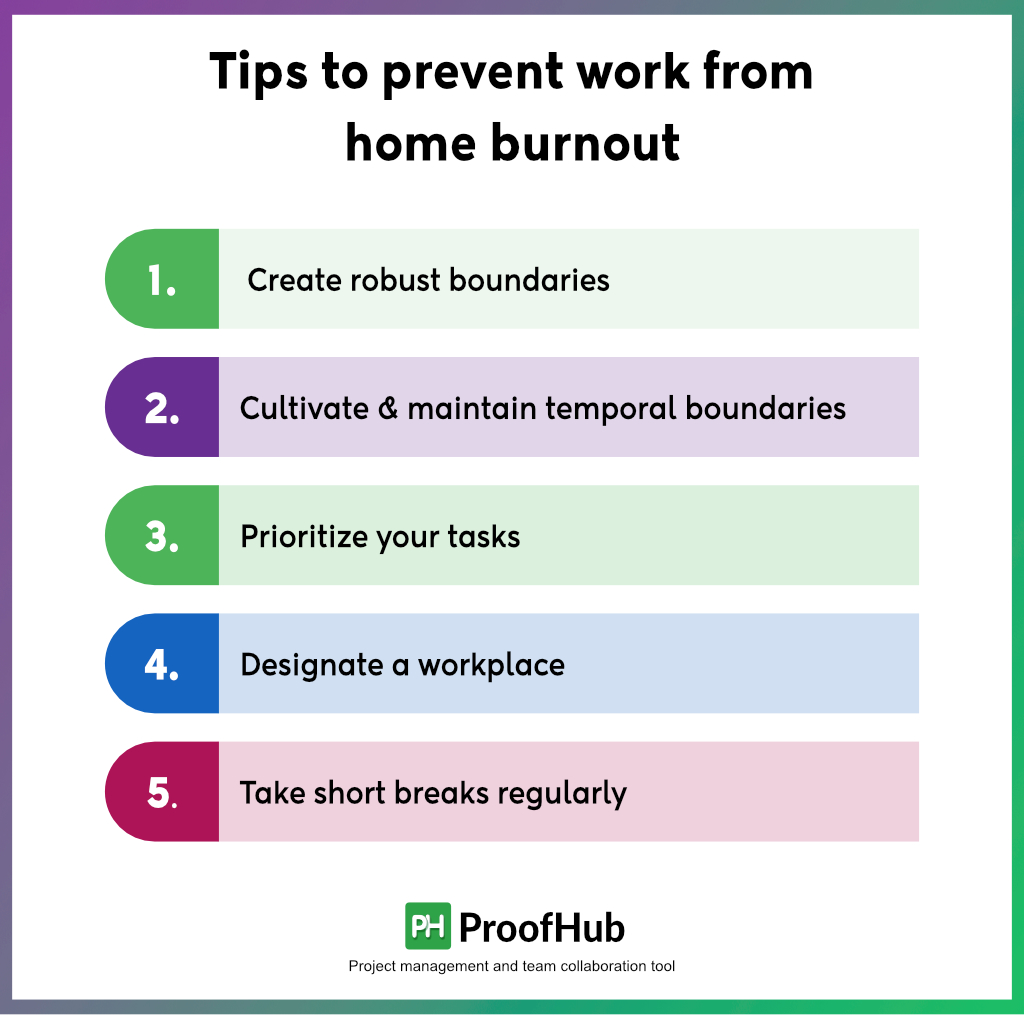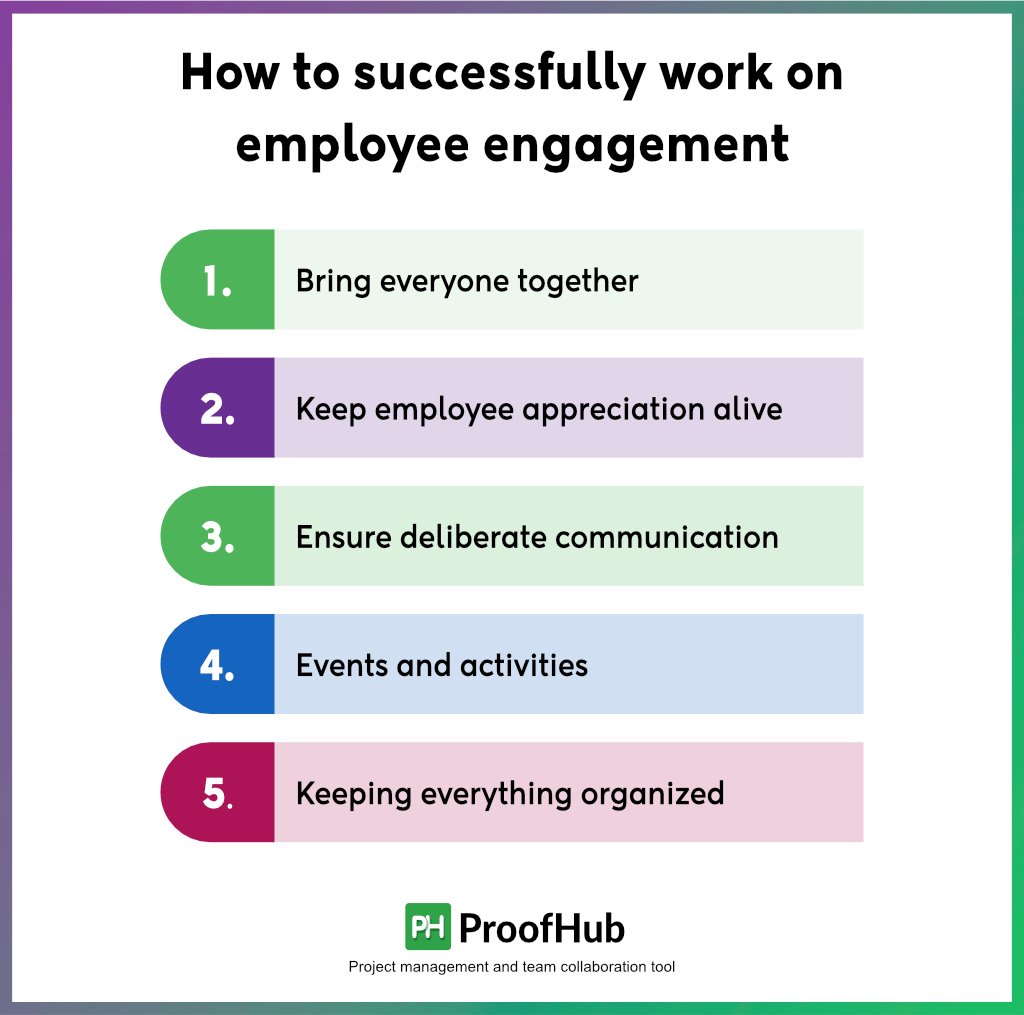Work from home burnout is quite frankly inevitable, because of the lack of communication and socialization. Owing to the loss of connection with the outside world, our teams are more than likely to head towards burnout.
However, the mundane routine and the lack of a much-needed social life may not be the only reasons that have led us to talk about such a critical topic today. There have been some factors that have been absolutely monumental to this fast-approaching remote work burnout – Factors like:
- Seemingly diminishing job security
- Economic distress
- Increased workload and expectations
- Blurred lines between work and personal life
And, let’s not forget most of which makes up a home – your family. The effect of running a family while also taking care of business has been especially hard on people working remotely, particularly women. Up to 9.8 million women have experienced burnout as they struggle to balance their families and work lives.
What is work from home burnout?
Work from home burnout is the prolonged physical, emotional, and mental exhaustion while working remotely. It is usually a feeling of tiredness and irritation often caused by mixing work and personal life, lack of social interaction, and lack of self-care. Burnout can reduce productivity, motivation, and overall health.
What does work burnout feel like?
When you’re stressed, emotionally exhausted, and unable to meet constant demands, it’s called burnout. As the tension mounts, you begin to lose interest in and motivation for the role you took on in the first place.
Burnout saps your vitality and reduces productivity, leaving you helpless, bleak, cynical, and resentful. You may eventually feel as though you have nothing left to contribute.
Burnout has negative consequences in all aspects of your life, including your home, career, and social life. Burnout can also lead to long-term changes in your body, making you more susceptible to illnesses such as colds and flu.
What are the symptoms of work from home burnout?
Burnout in itself is a complex psychological condition that can befall a person. Burnout happens over time. It isn’t something that happens overnight, but it might sneak up on you. The signs and symptoms are mild initially, but they worsen over time.
Consider the early signs as warning signs that something is amiss and needs to be addressed. You can avoid a severe collapse by paying attention and deliberately reducing stress. You’ll eventually burn out if you disregard them.
Symptoms of work from home burnout:
- Compulsive behavior
- Working excessively hard
- Not paying attention to personal needs
- Internatalized conflicts
- Revision in your value system to prioritize work over everything
- Denial of internal feelings
- Withdrawal from normal activities
- Behavioral changes/mood swings
- Depersonalization
- Depression
Tips to prevent work from home burnout
Work-from-home burnout is a typical occurrence for remote workers. While working from home can reduce office stress, virtual employees must prioritize their health and strike a work-life balance. A recent study by researchers showed that nearly 58% of workers were burned out, with only one in every three people claiming the cause was the pandemic.

Here are the top five tips that will help you prevent WFH burnout:
1. Create robust boundaries
You need to demarcate the shift from work to non-work roles through “boundary-crossing actions” in a famous paper. Wearing work clothing and going from home to work are physical and social markers that something has changed. You’ve gone from being “home you” to “work you.”
When working remotely, try to keep these boundaries in mind. It may be a significant change not to have to catch an early train to work or to be able to spend the entire day in your pajamas in the short term. Still, both are boundary-crossing activities that can benefit you in the long run, so don’t altogether quit them.
Put on your work clothes every morning—casual Friday is excellent, but get yourself ready.
2. Cultivate & maintain temporal boundaries
Cultivating and maintaining temporal limits is essential for happiness and productivity at work. This is especially true when so many employees—and their coworkers—are now trying to balance childcare or elder-care duties with regular work hours. Thanks to mobile gadgets that carry our work with us at all times, it’s tough even for employees without children or other family responsibilities.
Maintaining a 9-to-5 routine may be impossible. Employees must devise work-time budgets that are most effective for them. They must also be aware of and respectful that others may work at different times than they do. It could be a child’s nap for some, or it could be their partner preparing dinner for them. Whether they have children or not, employees can set aside time for work.
3. Prioritize your tasks
This is not the time to be rushing around. Workers should focus their efforts on high-priority issues.
Employees who work from home often feel obligated to look busy, but this might lead them to focus on tasks that are more urgent rather than critical—a trend that research suggests is unproductive in the long run, even if it boosts productivity in the near term. Employees, particularly those juggling home and work responsibilities, should prioritize critical work.
Working nonstop, even on the most vital tasks, isn’t the solution. According to some estimates, the average knowledge worker only works three hours daily, and these hours should be uninterrupted.
4. Designate a workplace
Designating a specific workspace is important to create a productive and mentally healthy remote work environment. Start by picking the right location in your home, ideally, a quiet area where you can work without constant interruptions and with adequate lighting.
Also, an ergonomic setup is equally important for preventing physical discomfort and promoting long-term health. Start with a good adjustable chair that provides support, and helps you maintain arm support and a straight spine position. Make sure you sit comfortably and keep your desk at eye level.
By doing this you can significantly improve your comfort, productivity, and overall well-being while working from home.
5. Take short breaks regularly
Taking regular breaks helps you maintain mental clarity and prevent fatigue, it allows your brain to rest and reset, which can improve creativity and problem-solving abilities.
Short breaks provide you the opportunity to physically move around, reducing the risk of developing physical issues associated with long hours of sitting. Doing stretching, walking, or simple exercises, can relieve tension and promote better circulation, contributing to overall physical health and relaxation.
5 Signs of work from home burnout
If you have been working remotely for quite some time now, chances are that you are on the precipice of having WFH burnout as well. However, burnout isn’t a sudden occurrence. It builds up from certain practices over a significant period of time like water circling around a drain for some time before it is completely flushed out.

Here are some signs you must look out for:
1. Trouble Getting Started
Mornings are the most productive time for most people. Everyone wants to kick off the day with some productive inputs and hence the first half of the day helps people come up with better outcomes as compared to the second half.
Prepare in advance what you have to do in the morning so that important tasks are not missed and you do not feel clogged in the evening.
My friend Celine, who had been working from home for the better part of last year told me that one day she just didn’t have the motivation to get out of bed and prepare for the day. That’s when she realized that she was diving head-first into a potential burnout.
Here’s how you can be the driver of your own motivation every single day while you are working from home:
Keep changing your setting
- To keep yourself motivated all the time, you need to practice frequent change. By breaking the monotony you can have a new start at the same old thing again and again. This will help you bring an air of nuance to your work and help you put an innovative foot forward every time you begin a new day.
Kick-off the day with some light workout
Fresh sunlight in the morning with some workouts can help you reduce stress and start your day on a positive note.
The loneliness and angst of being at home all the time can deprive you of happiness – working out will help replenish you with the lost serotonin and dopamine, which will help you feel better.
In my personal experience, going on a run, going on a bike ride every morning, or even playing badminton with my kids gives me the essential energy boost before I start working.
Therefore, I think, to get rid of this symptom one could try working out in the morning.
2. Communication troubles
Another indicating factor of impending remote work burnout is that you are having trouble communicating with your team. Working from home is hard because there can be gaps in communication, a lack of clarity of assignments, a very high chance of misunderstanding/miscommunication, and eventually, mistakes.
You must have had experiences at your job wherein you made some kind of error, it might even have been a teeny tiny mistake, but it was enough to make you rethink your whole career path.
Here’s how you can deal with this communication problem:
- Remote work can leave a gap in communication. For example, if a design team sends me media files for feedback, I wouldn’t be able to provide proper feedback through mail, instant messages, or video calls. The information can get lost in translation, and the product, in turn, never turns out to be as intended.
- This is why teams need software solutions that can help them collaborate in real-time. For example, Google Docs helps teams build airtight content while providing transparency through task comments and file versions.
Also, ProofHub can help you manage projects as a whole and share files on the go. With proofing features, ProofHub helps teams collaborate through features like chat and discussion in real time and safeguard all versions of the same file in one central location.
Another problem is when people cannot be held accountable while working from home. It is hard to hold people accountable for delays in tasks when they fail to give a helpful response in time.
Now this problem is fairly easy to resolve. All you need is a remote work guide to help your team understand the acceptable amount of time they could take to revert back to the other employees.
Also read: How to draft remote work policies from scratch?
3. Client feedback
Another major factor that indicates that there is burnout coming is how much harder it has been for you to document and act on client feedback. Feedback from the clients is a stepping stone in the progression of work — it gives the team a direction to work with, valuable insight into the areas that could use some improvement, and an overall analysis of how the client or the customer is feeling about your product or service.
Here at ProofHub, client direction is invaluable for our team. The feedback is what shapes our goals and helps us prioritize work with certainty. So I can totally see how mixed-up, unclear, unmotivated client feedback can lead to project failure and burnout of my employees.
Since client feedback is monumental to the working of the whole team and the success of your project, the absence of the same can lead to some frustrating outcomes.
Here’s how you can make sure that you receive helpful and actionable feedback from your clients:
- Maintain transparency: Keep the client in the loop about everything that is going on with their project and make sure that they always stay informed.
- Note pointers on project initiation: Whenever your team takes up a project and commences operations, make sure to note down and take into consideration every little detail that the client wants to see in their product or service.
- Use mark-up tools for actionable feedback: Mark-up and annotation tools can help teams understand what and where the changes are required. This helps the people involved proof various types of files and gain timely feedback from the concerned stakeholders.
4. The monotony of work
Another telltale sign that suggests that you are well on your way to a WFH burnout is that work will seem to be more monotonous by the minute. The same old surroundings, same old desk, the same old view out the window, and the same type of agenda for every single day, can mess with your head. And to that, you add some drops of “non-existent social life” and you have a deadly cocktail on your hands.
The monotony and the loneliness make up for a perfect burnout recipe.
The best thing you can do to remedy this situation is to make efforts so that nothing gets to the stage of becoming monotonous in the first place.
- Take planned breaks throughout the day so you don’t turn into a demotivated couch potato.
- Indulge yourself in a regime of dancing or doing aerobics before you start your workday and again when you sign off.
- If you cannot go outside just yet, walk around your home at fixed intervals of time to engage yourself in something other than work.
- Break the monotony by taking up online courses to widen your horizons and then use what you have learned by implementing it into your work.
- People need people to cut out the monotony.
- Make sure that geography doesn’t become a factor that interferes with the interpersonal relationships that people have within their teams.
- Also, events that drive team engagement are an absolute must when your employees are working from home.
These things are going to ensure that the people of your team feel connected to the organization, and hence, to the collective cause you are all working towards.
5. Team culture becoming apathetic
Once we stopped seeing all our team members around us at the office, we started to forget who they were. Were they nice and warm, sharp and cunning, or soft and cuddly? It has been over a year since COVID-19 first came into our lives, and the lack of social life has been deadly.
When I talk about team culture becoming apathetic, I mean to make you realize that if the employees aren’t connected to an anchorage that can help keep them together, they will lose the grasp of the whole concept of collectivity and compassion.
What you need is to maintain an environment where everyone realizes that they are working towards a common goal. The connection I am talking about here is that of employee-to-work and not of employee-to-employee that we discussed in the last point.
I think these are some of the things you can do to ensure that your team feels connected to the work, and hence, help in preventing work-from-home burnout in the long run.
Setting short-term goals
Setting daily or weekly goals will help your team become more focused, more engaged, and hence more productive. These goals will help the team align themselves in a more goal-oriented direction which will help them be more interested in the job at hand.
Communicating regularly
Communicating about work, and discussing how things are going and how they are developing within the project is also one of the major drivers of motivation. It gives a message that everyone is putting their hundred percent in their jobs.
Working with transparency
Transparency is what drives accountability and loyalty within a team which, in turn, brings the team closer to achieving collective goals. Therefore practice transparency by collaborating with your team through a project management software platform that helps you track activity and view progress.
I think all of these points above suggest that improving employee engagement might be all that is needed to keep WFH burnout at bay. Therefore, let’s discuss how we can work on that.
How to successfully work on employee engagement
Employee engagement, as an academic definition would provide, is “a workplace approach resulting in the right conditions for all members of an organization to give of their best each day, committed to their organization’s goals and values, motivated to contribute to organizational success, with an enhanced sense of their own well-being”.

This approach to building a team culture has to be worked upon while your employees work from home. Because staying at home will not only drive them away from their team. Here’s how you can mend that:
1. Bring everyone together
The best way to bring your team together is to have them be on the same page at all times. We tend to do that using ProofHub. Near or far, it does not matter where we are since we can see the comments being added, tasks making progress, and teams meeting milestones all through a small project management platform.
There are many collaboration platforms out there that will help your team work together through a planned workflow. Tools such as ProofHub, for example, help us coordinate and provide insightful feedback on the go, which, in turn, makes remote work easier all around.
2. Keep employee appreciation alive
Even though we can’t really make elaborate announcements in team meetings anymore, that does not mean we should curb employee appreciation. In fact, while we work remotely, appreciation should be made a regular thing.
For instance, at our organization, we hold monthly events that are packed with fun activities. As we near the end of these events we appreciate all the people who have recently made some significant progress or those who have reached certain milestones.
Further reading: Surprising stats on employee recognition you need to know
3. Ensure deliberate communication
Communication between the team is also a necessary factor when you consider executing employee engagement. People get to know each other and know how the other person clicks and how the other person thinks, only when there is enough communication.
Therefore, we must always have the appropriate tools to offer to our employees for effective communication within the team. For example, at our offices, we use ProofHub to ensure that everyone is always in the loop about everything. Since it offers one-on-one messaging and group chats, it solves the purpose of day-to-day communication very well.
Another thing you must enforce so that there is always a connection within your team is to have video meetings at least twice a week. Better yet, you could plan a daily 15-minute meeting in the mornings before anyone can start their work so that everyone gets to engage in a quick discussion about the agenda.
4. Events and activities
When a team is working out of an office, there are always some fixed days for fun activities and events. However, while people work from home, it’s all work and no play. Now that’s unfair. In fact, our team feels that events should be made twice as frequently while people are working remotely.
Events such as playing games on a team video call trying to collectively solve puzzles online, or playing “skribbl” with your team can all be great options to keep them engaged. I have to say, I’ve tried this with my team, and all I’ve observed is that instead of losing focus, they start to gain more focus on work after the fun and games are over.
Also read: Best and easy remote team building activities that work
5. Keeping everything organized
There seems to be a clear disconnect within teams when people cannot collaborate, this often happens as a result of a lack of transparency and clarity. This can be made right by keeping everything organized.
A task management system or a project management tool could suffice for all your organizational needs with ease. We use ProofHub, quite religiously to:
- Schedule tasks, milestones, and events,
- Organize tasks based on type,
- Document important discussion points,
- Conduct conversations, and
- Maintain important notes
Everything – all on the same platform. These few factors help us hold the team together and ensure that everything stays in order.
Conclusion
This work-from-home period could be a real lull in the lives of your employees, with people losing their jobs left and right, our teams need to feel safe and involved. So, let’s give them an anchorage, a reason to believe in their work, a collective goal to look forward to.
I hope this article will guide you in the right direction and help you make some much-needed changes to the remote team culture to prevent the impending doom, that is, work-from-home burnout.
FAQs
Can working from home cause burnout?
Working from home exposes people to a form of dual stress. Prolonged exposure to such dual stress can lead to isolation, exhaustion, and depression which can be categorized as burnout.
How can I overcome from working at home burnout?
To overcome from work from home burnout:
- Take regular breaks from your work
- Ensure you get time to exercise
- Always take some time out to focus on yourself
- Build a routine
- Create boundaries
- Eat healthy food items
How long does work burnout last?
It takes at least 11 weeks to recover from a period of stress or overwork that has developed into burnout. Burnout rehabilitation might take a year to several for most people.
How can you cope with work stress?
To cope with work stress you can:
- Keep your mornings simple.
- Set and manage expectations.
- Avoid conflicts.
- Always be organized.
- Do not multitask.
- Take regular breaks.
- Control the need to be perfect
Why could remote workers experience burnout?
The isolation of remote work and the added stress of home & work-related issues at the same time can cause remote workers to be more susceptible to burnout.

